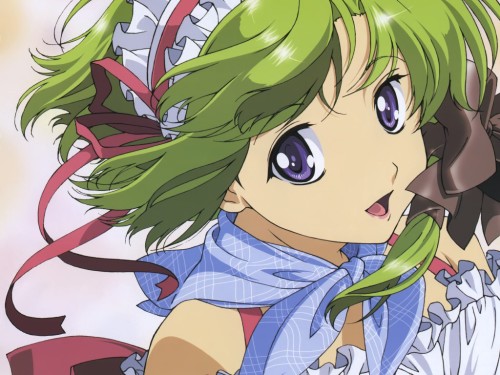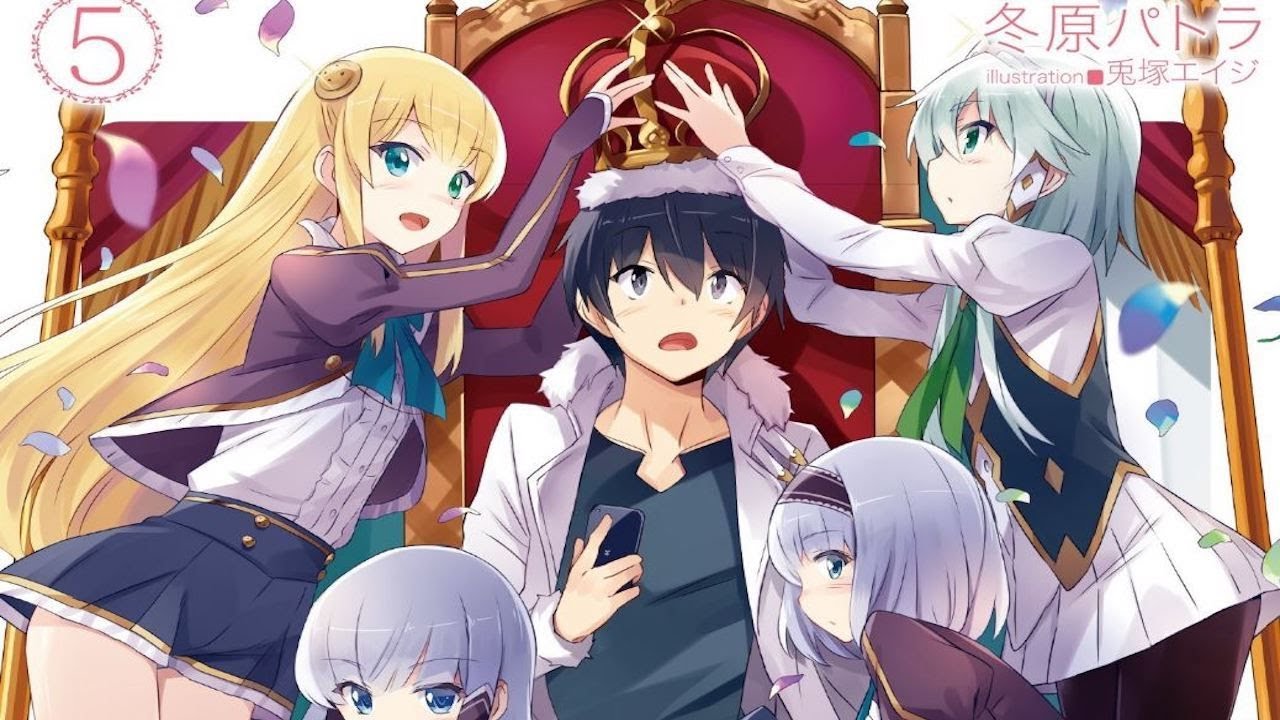I had watched Shuffle! back at the beginning of my anime-watching career, and it was my first exposure to harem anime. For perspective, the anime released back in 2005. The story is based on a visual novel. I will include spoilers.
Enter Rin, a typical droll harem protagonist defined by his “niceness” and his, ahem, dumbassery. Like many harem protagonists, he has the emotional intelligence of a thrown brick. As I watched, I kept thinking of him as a, for lack of a better word, a dumbass. Much to my own concern, I associate that word with harem protagonists. Few have the emotional intelligence that would attract so many intelligent and capable women. Usually, they attract such characters just because the guy is the protagonist. It’s meant to be male-escapist fantasy, of course. Only he can save each of the girls from the troubles caused by their pasts. And he does so just be being normal and “nice!”

Time for me to explain why I keep writing “nice.” I don’t mean it in a sarcastic way. Rin is a nice person to a degree, but his brick-level emotional intelligence makes him far from nice. After all, he strings along five women who all have feelings for him. He remains blissfully unaware of the depths of their feelings for him and their emotional distress with the situation. He just takes his turn dating each of them and otherwise being a friend. He knows they all have feelings for him. After all, they directly tell him after a point, so he isn’t a nice guy at all.
The situation is worse with Kaede, his childhood friend and housemate. While he sees her as his best friend, she has feelings for him (of course). When he was a child, his parents and Kaede’s mother were killed in an accident. Kaede’s father takes Rin in. Kaede blames Rin for the accident and abused him for it. When she realizes her error, she begins to take care of his every need: cleaning and cooking for him. For his part, Rin takes her for granted and remains blind to her increasing mental distress. Kaede eventually works herself to collapse. In his “niceness” and concern, Rin takes minimal care of her, but he doesn’t bother to help her with housework or with cooking. Later, he realizes how difficult housework and cooking can be on top of everything else that needs to be done in a day.
Some of Rin’s behavior toward housework is standard for a Japanese guy. The problem is common across the world, but Japan has a long history of unequal housework among the genders. According to 2017 data, women spent 224.3 minutes per day while men spent 40.8 (OECD, 2017). According to recent OECD data, this hasn’t changed by much. So Rin represents fairly typical behavior only without the reason a salaryman has: he lives at work. Kaede is at home the same amount of time he is. Granted, Rin does something few harem protagonists do: he picks one. It takes him forever to do so. He isn’t the brightest bulb, but he does pick one of his interests. In fact, he selects his long-time friend, Asa. She joshes him like a long-time friend would, and she doesn’t show strong signs of loving him like the others do. Her presence throughout the story lends Rin stability and often wise advice. It’s nice to see a harem protagonist pick one of the less buxom girls. Asa is a tomboy too, which makes her another unusual pick. Rin is capable of reflection. Late in the series, he realizes how much of an idiot he is, although this doesn’t make him any more thoughtful about, well, anything. It’s rare to find a thoughtful protagonist as I’ve often discussed.

I’ve beat up on Rin so far because of the nature of harem anime protagonists. The women are smart, but they also stuck in the “magnetic” nature of Rin as the protagonist. It’s something like the plot armor problem of fantasy and action stories. Rin’s stupidity and the women’s superhuman persistence makes the plot work. It would be more difficult to write a harem with more realistic female characters: the type who would get sick of his lack of decisiveness and move on. Honestly, such a story might prove more interesting than the usual escapist fantasy harem anime focus upon. But such a story would be likely prove unpopular among anime watchers for break from the usual template.

Because it had been well over a decade since I watched Shuffle! I couldn’t remember how it progressed. I was pleased to see Rin grow up and even choose Asa instead of returning back to the beginning as is common with harems. The art style is decidedly moe and lacks the slickness of current anime. It is interesting to return to the early 2000s and see the development of anime’s style to what we see today. Today’s designs are less angular and softer while retaining the large eyes. Hair styles have also softened from the spikiness that characters anime hair for decades. Shuffle! shows some of this transition.
Shuffle! has some fan service, mostly underwear plays, but it also has some breast nudity too. The presence of female nipples but not male in the art style reflects the continued sexualization of the breast. Not a surprise, by any means, but it is worthy of thought. Many stories do the opposite. Male nipples are fine to show but not female. Some of this comes from the shift in censorship norms over time.
So should you watch Shuffle! today? The English dub is pretty stilted. As harem’s go, Shuffle! doesn’t really follow the usual character tropes like tsundere or yandere. The elements are there, but they aren’t prominent. The story provides a glance at anime’s development. Shuffle! is pretty average fair. Unless you are a big harem anime fan, you enjoy light fan service, or interested in seeing another segment of anime development, I suggest you avoid this one. There are more interesting harem anime out there (and ones that show more emotional intelligence), although Shuffle! is still entertaining for what it is.
References
OECD (Organisation for Economic Co-operation and Development). 2017. “OECD familydatabase.” http://www.oecd.org/els/family/database.htm
OECD Stats (accessed 2020) Time use. https://stats.oecd.org/Index.aspx?datasetcode=TIME_USE




